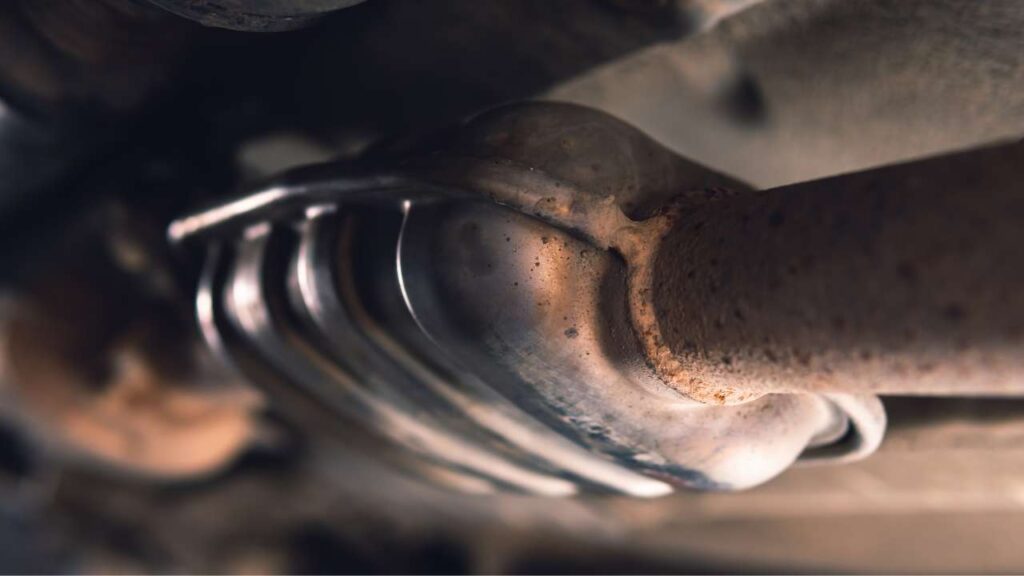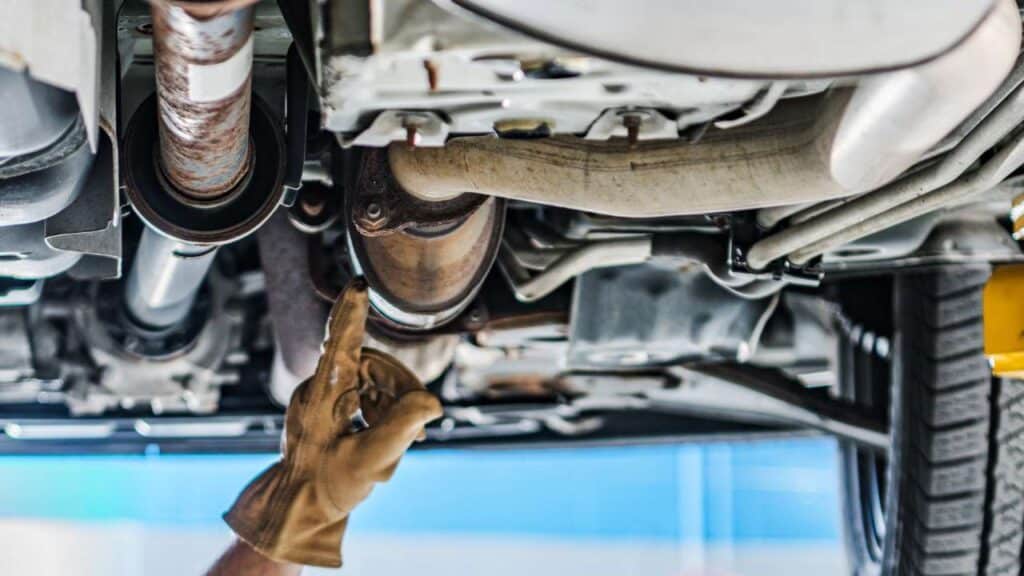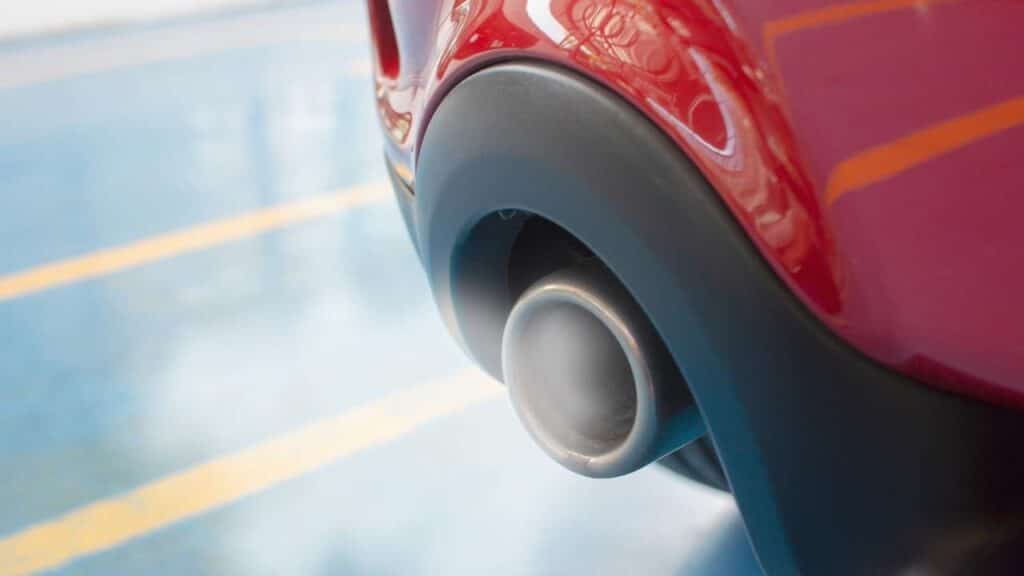A quick google search of the ‘best catalytic converter cleaners’ will pull up several products, which begs the question, do these products really work? Well, it all depends on the condition of your catalytic converter.
Using a catalytic converter cleaner on a defective catalytic converter with the aim of fixing it won’t work. And no amount of additive can fix a bad catalyst. But suppose you have carbon build-up clogging a properly functioning catalytic converter, a quality catalytic converter cleaner will help clear out the carbon deposit and restore the system’s efficiency.
But with the host of products on the market, finding one that works might be a bit of a hassle. Don’t worry; we are here to help. We’ve tested several products and compiled a list of the best catalytic converter cleaner that delivered on their promise.
Our top pick, Cataclean Complete Engine, Fuel, and Exhaust System, cleans out just about anything. This catalytic converter cleaner works as an emissions system cleaner and fuel system cleaner. While at it, it also cleans the engine, invariably improving the vehicle’s overall efficiency.


- Product type: Fuel and Exhaust system cleaner
- Size: 500ml
- Compatibility: Gasoline, Diesel, and Hybrid engines
- Other Packaging: Twin pack and Pack of six

- Product type: Exhaust system cleaner
- Size: 473ml
- Compatibility: Diesel engines
- Other Packaging: Only available in a 16-ounce bottle
Top 7 Best Catalytic Converter Cleaners
- Cataclean 120007 Complete Engine, Fuel, and Exhaust System Cleaner (Top Pick)
- Dura Lube Diesel DPF and Catalytic Treatment (Best for Diesel Engines)
- Solder-It CAT-1 Catalytic Converter Cleaner (Best For Rotten Egg Smell)
- OXICAT Oxygen Sensor and Catalytic Converter Cleaner (Eco-Friendly)
- Liqui Moly Catalytic System Cleaner (Best Heavy Duty)
- CRC Guaranteed to Pass Emissions System Cleaner (Best Fuel Economy)
- Chevron Techron Concentrate Plus Fuel System Cleaner (Prevents Carbon Build-up)
- DIY Solution
- Product type: Fuel and Exhaust system cleaner
- Size: 500ml
- Compatibility: Gasoline, Diesel, and Hybrid engines
- Other Packaging: Twin pack and Pack of six
Cataclean Complete Engine, Fuel, and Exhaust System is the top pick on our list of best catalytic converter cleaners. This product is an all-in-one cleaner for the engine, fuel, and entire exhaust system.
It eliminates carbon buildup from fuel injectors, cylinder heads, oxygen sensors, and the catalytic converter. Although the 16-ounce solution is pricey, it is easy to use and delivers on its promise.
Cataclean has been shown in tests at a third-party emissions testing facility to cut down on hydrocarbon emissions by as much as half. Pour the product into a close-to-empty gas tank and drive around for about 15 minutes.
Running the emissions system cleaner through your vehicle will clear all the drivability problems like decreased power, sluggish acceleration, and hard starting.
Pros
- Complete engine and fuel system cleaner
- One application is sufficient to eliminate the carbon buildup in the catalytic converter.
- It is simple to use
- Boosts efficiency and lowers emission
Cons
- It is quite expensive
- Product type: Exhaust system cleaner
- Size: 473ml
- Compatibility: Diesel engines
- Other Packaging: Only available in a 16-ounce bottle
For owners of diesel engines, Dura Lube Diesel DPF and Catalytic Treatment is a viable option. The solution was formulated to clear caked-up soot in the exhaust system and improve the system’s efficiency.
Dura Lube Diesel DPF and Catalytic Treatment work to eliminate the soot build-up inside the catalytic system and allow for fewer regenerate burn cycles. And improving the exhaust system efficiency reduces fuel and DEF fluid consumption.
A 16-ounce bottle is sufficient for 60 liters of diesel fuel. This cleaner will drastically reduce your carbon footprint and improve your overall engine efficiency.
Pros
- Very effective in removing carbon buildup in the catalytic converter and DPF
- Improved your engine performance
Cons
- Only suitable for diesel engines
- Product type: Exhaust system cleaner
- Size: 16 Oz can
- Compatibility: Gasoline engines
- Other Packaging: Twin pack
Solder-It Catalytic Converter Cleaner is guaranteed to help your engine operate better, produce fewer harmful gases, and pass an emissions test. The 16-ounce cleaner is designed to do more than just clean; its deodorizing properties allow it to eliminate the rotten egg smell associated with toxic vapors.
It works best if added to a gas tank that is roughly a quarter full. After pouring the solution into your vehicle, drive around until the tank is nearly empty before refilling. The solution is very potent for eliminating the stench of rotten eggs and works quickly to clean your cat converter so you can pass the emissions test.
Pros
- It helps get rid of the rotten egg smell
- It is affordable
- Cleans the oxygen sensor
- Prolongs the interval between tune-ups
Cons
- It can damage the converter if not used according to the specification.
- It may require subsequent applications to eliminate the smell.
- Product type: Exhaust system cleaner
- Size: 250ml
- Compatibility: Gasoline and Diesel engines
- Other Packaging: Twin pack
Looking for an environmentally friendly cat cleaner? Then this is the cleaner to grab off the shelf! This German-made cleaner is intended to clean the entire exhaust unit by getting rid of all the soot and carbon buildup.
When used correctly, it works wonders at cleaning, restoring performance, and clearing error codes triggered by a clogged catalytic converter. The product is suitable for both petrol and diesel engines.
But the converter must reach and maintain an optimal operating temperature for the product to work efficiently. And like any other catalyst cleaner, this product won’t help to repair a cracked or damaged unit.
Pros
- It is less expensive and environmentally friendly
- It prevents the accumulation of harmful substances
- Suitable for petrol and diesel engines
Cons
- It may not work for a heavily contaminated catalyst.
- Product type: Engine and Exhaust system cleaner
- Size: 300ml
- Compatibility: Gasoline engines
- Other Packaging: Only available in 300ml can
Liqui Moly Catalytic System Cleaner is another effective solution for cleaning catalytic converters. This highly concentrated product will help eliminate the soot and carbon buildup clogging your catalytic converter. It also cleans the engine during the process.
But unlike other solutions that go into the gas tank, this product is sprayed directly into the intake tract. Start and idle the engine (around 2,000-3,000 rpm) before spraying the product into the intake tract.
Pros
- It gets rid of emissions.
- Multipurpose cleaner
Cons
- It can only be sprayed into the intake
- Limited application — suitable for only gasoline engine
- Product type: Fuel and Exhaust system cleaner
- Size: 355ml
- Compatibility: Gasoline engines
- Other Packaging: Only available in 355ml bottle
CRC formula is another great option for a gasoline car. This cleaning solution contains powerful detergent additives that are strong enough to obliterate harmful carbon and varnish deposits from the fuel and exhaust system.
Asides from its interesting sales pitch, the formula has proven effective in reducing carbon oxide, nitrogen oxide, and hydrocarbon emissions. It also cleans the carbon buildup in the combustion chamber and fuel injectors, improving the overall vehicle performance.
Add a bottle to your gas tank and leave the solution to work its magic. And as its name suggests, you are guaranteed to pass an emissions test after using it, as it reduces carbon monoxide, hydrocarbon, and nitrogen oxide emissions.
Pros
- Cleans both the fuel and exhaust system
- One application is sufficient to improve engine performance
- Easy to use — pour directly into the fuel tank
Cons
- Not compatible with diesel engines
- Severely clogged systems may require a second treatment.
- Product type: Engine system cleaner
- Size: 591ml
- Compatibility: Gasoline engines
- Other Packaging: Also available in a pack of six
Preventing caked-up carbon buildup in the CAT is a sure-shot means of averting a clogged-up catalytic converter. And Chevron Techron Concentrate Plus Fuel System Cleaner is one product you can rely on to help prevent carbon buildup and maintain clean catalytic converters.
The formulation keeps the engine clean by eliminating carbon deposit formation in the combustion chamber, allowing for better engine combustion and cleaner emissions. Improved engine combustion invariably reduces the carbon deposit (soot) in the engine by-product, which would otherwise clog the converter.
Chevron Techron cleaner employs additive technologies to improve your engine’s efficiency, which in turn reduces emissions and boosts performance. The enhanced engine performance will also improve fuel efficiency.
Pro
- Cleans the engine of carbon formation, invariably preventing clogged catalyst
- Improves fuel efficiency
Cons
- Obtaining optimal results may call for a sizable amount.
DIY Solution

A review of the best catalytic converter cleaners without a DIY solution will be incomplete. Pure lacquer cleaner is a powerful solvent capable of clearing carbon deposit clogging vehicle catalysts.
Pour a gallon of lacquer thinner into a half-full gas tank. Then drive the car around for a while at a speed of 150 MPH or idle the engine at 2500 RPM for about thirty minutes to run the cleaner through the system. Doing this burn away the soot clogging the catalyst and impeding its efficiency.
Besides using pure lacquer cleaner, another DIY option is removing the catalyst and soaking it in a soap-water solution. Using a laundry detergent and water solution, soak the converter overnight to remove all the soot clogging the system.
While the latter option of soaking in soap-water solution delivers a better result, removing the catalytic converter from the exhaust system is no easy task.
Pro
- Delivers similar or even better results than most of the products discussed above
- It is an inexpensive solution since most of the products are readily available.
Cons
- This solution won’t work on a bad catalytic converter.
What is a Catalytic Converter Cleaner?
Catalytic converter cleaners are solutions that clear out the carbon and soot deposits in the catalyst. Besides cleaning the exhaust system, most of these products also rid the fuel system and engine of carbon build-up, improving overall engine performance.
The formula is poured into the gas tank and flows with the gas to the engine and into the exhaust system, where it breaks down carbon deposits. But some products are sprayed directly into the intake tract instead of pouring into the gas tank.
Catalytic converter cleaners gradually became a thing following the emergence of stricter emission regulations — the laws set vehicle emission standards and mandated regular emissions testing. Carbon deposits in the catalytic converter impede the exhaust system from running efficiently, invariably causing the vehicles to fail an emissions test.
There was a need to find a means of cleaning the exhaust system, particularly the catalytic converter, as replacing it cost a lot of money. This prompted the development of catalytic converter cleaners.
Reasons to Use Catalytic Converter Cleaners
For one, Carbon buildup in the catalytic converter can cause premature engine failure. The black soot clogs the catalyst preventing the engine’s exhaust from leaving the vehicle.
This, in turn, creates back pressure reducing the engine’s efficiency and gradually causing its failure. Below are the benefits of using a catalytic converter cleaner:
1. Improved vehicle performance

Using a cleaner to free up the Catalyst will improve the vehicle’s overall performance. A dirty catalytic converter affects more than just your car emissions. It also affects the engine performance as the clogged converter slows combustion, consequently impacting performance.
The driver may notice sluggish acceleration, rough idle, engine misfire, reduced engine performance, etc. However, cleaning the catalyst inlet will eliminate the driveability issues linked to a clogged converter, invariably improving the vehicle’s performance.
2. Cleaner exhaust emission

Exhaust gases contain carbon dioxide and several other compounds contributing to climate change. And vehicles with clogged or faulty catalytic converters release two or three times the normal carbon emission level. This is because the converter isn’t working efficiently and can’t filter out the harmful byproducts in the exhaust gas.
Cleaning out the carbon and soot deposits in a clogged converter restores the system’s filtrating capacity, returning the emission levels to normal.
3. It saves money

Typically, a new catalytic converter costs between $950 to $3,400, depending on the vehicle’s make and model. The slightest drop in the catalytic converter efficiency will trigger a check engine warning. And most times, the slight drop is usually due to a clogged catalyst.
So, cleaning the clogged catalyst can help restore the system’s efficiency and also help save money that would otherwise be spent on getting a replacement. The driver will also notice improved fuel efficiency, consequently saving on gas, as a clogged catalytic converter increases fuel consumption.
Things to Consider Before Buying a Catalytic Converter Cleaner
Since these cleaners contain strong chemicals as the active ingredient, you want to exercise some precautions and be sure of what you are putting into your vehicle. Aside from that, you also don’t want to spend money on something that won’t give value. Below are some factors to consider before buying a cat converter cleaner:
1. Compatibility
The first factor to consider before buying a catalyst cleaner is whether the cleaner is safe for your vehicle engine. While it may sound implausible, some cleaning solutions are engine specific, and using them on an engine outside the manufacturer’s recommendation can lead to catastrophic damage.
You shouldn’t worry too much if you’re driving a gas-powered vehicle. Cleaners for their catalytic converters are widely available, and the vast majority work fine with standard gasoline engines. The limitations are usually with hybrids and diesel-powered engines.
Thus, you should carefully read the product manual to determine if it is safe for your engine.
2. Quantity
These solutions usually come in different-sized bottles. As a result, there are wide varieties of cleaning solvent sets, each with varying capacities. Remember that you may need to use the entire bottle at once to achieve the desired outcome.
While there may be some variation in the required amount depending on the brands and solution, the bottles are typically meant to be used at once. Also, since these cleaning products don’t last very long once the seal is broken, it is best to select a smaller quantity bottle if all you intend is a single treatment.
However, you can opt for smaller bottles if you intend to stock up. And if you want to treat many vehicles at once, choose the larger option, which contains 10 to 20 ounces of fluid for each set. About 10 to 15 ounces of cleaning chemical is suitable for a fuel tank of typical size (16 gallons).
3. Cleaning efficiency
In your search for a catalytic converter, you may have discovered that some products also clean engines and fuel systems alongside the exhaust system. Since these components are interconnected and interdependent, some manufacturers have formulated their products as an all-in-one cleaner that eliminates any carbon deposit it comes in contact with.
Look out for these all-in-one cleaners that eliminate carbon buildup in the cylinder heads, fuel injectors, and entire exhaust system. They help improve your vehicle’s overall performance and fuel economy.
4. Chemical composition
The average catalyst cleaner bottle contains more chemicals than the regular cleaning product. You should check that the chemical used is safe for your vehicle, the environment, and, most importantly, yourself.
Catalyst cleaners are subject to state laws, so you also want to check that it is allowed in your state. But you should have at the back of your mind that despite the promise of most catalytic converter cleaners to clear your check engine light and return your catalyst efficiency, the product will only work on a clogged catalyst.
It can’t repair a broken catalytic converter.
FAQ
Can I Clean My Catalytic Converter Myself?
Yes, you can. But depending on the method you intend to use, the process can be easy or a bit difficult.
Using a catalytic converter cleaner is straightforward and is something anyone can do. Most of the products have a user guide for the product application. And you are expected to drive the vehicle around or idle the engine for about thirty minutes to run the cleaner through the system after pouring it into the gas tank.
But removing the catalytic converter for a thorough cleaning might be a bit difficult, even for the regular DIYer.
Can You Put Catalytic Converter Cleaner in a Full Tank?
Most cleaners recommend using the solution with one third or half-full gas tank. And it is always advisable to closely follow the product’s recommendation for the best result. So before pouring the product into your gas tank, you want to check the product guide for the recommended usage.
How Often Should I Use a Catalytic Converter Cleaner?
Catalytic converters get dirty over time from the endless filtration of harmful exhaust gases. We recommend cleaning the catalytic converter three to five times yearly to keep the catalyst in great shape and running efficiently.
Will It Fix My Broken Catalytic Converter?
Unfortunately, the answer is no. Catalytic converter cleaners were formulated to clear clogged catalysts and not repair a broken one. The only solution to a defective or broken catalyst is to get a replacement.
Final Thoughts
Catalytic converters became widespread in the 1970s, shortly after The National Emissions Standards Act set the first federal vehicle emissions standards. These catalysts convert toxic gases from engine emissions into safe gases before releasing them into the air.
And a catalytic converter replacement costs between $950 to $3,400, depending on the vehicle’s make and model. The high cost of these converters necessitated the development of cleaners that can be used to clear clogged catalysts and restore the system’s efficiency.
This way, you get to extend the lifespan of the converter while also saving the money that would have otherwise been used in replacing the converter. We’ve compiled a comprehensive list of the best catalytic converter cleaners, from all-in-one cleaners to cleaners for diesel engines and rotten egg smell.
Our top pick, Cataclean Complete Engine, Fuel, and Exhaust System, is an all-in-one cleaner that cleans the trio of the catalyst, engine, and fuel system. Then there is Dura Lube Diesel DPF and Catalytic Treatment designed for diesel engines and Solder-It CAT-1 Catalytic Converter Cleaner that obliterate even the worst rotten egg smell.
Related Content:











